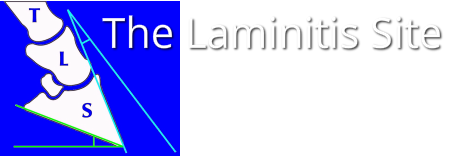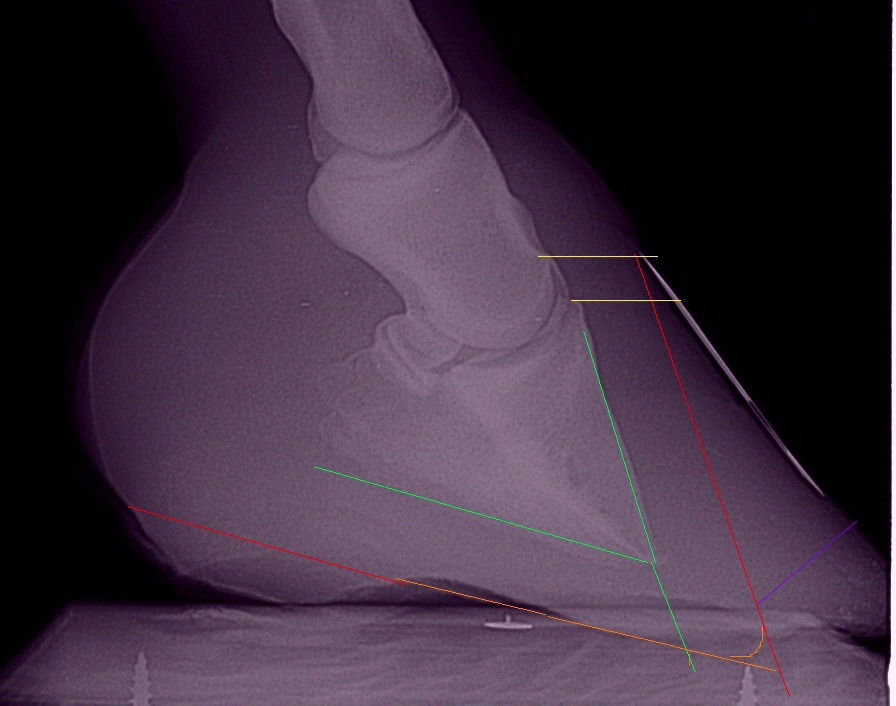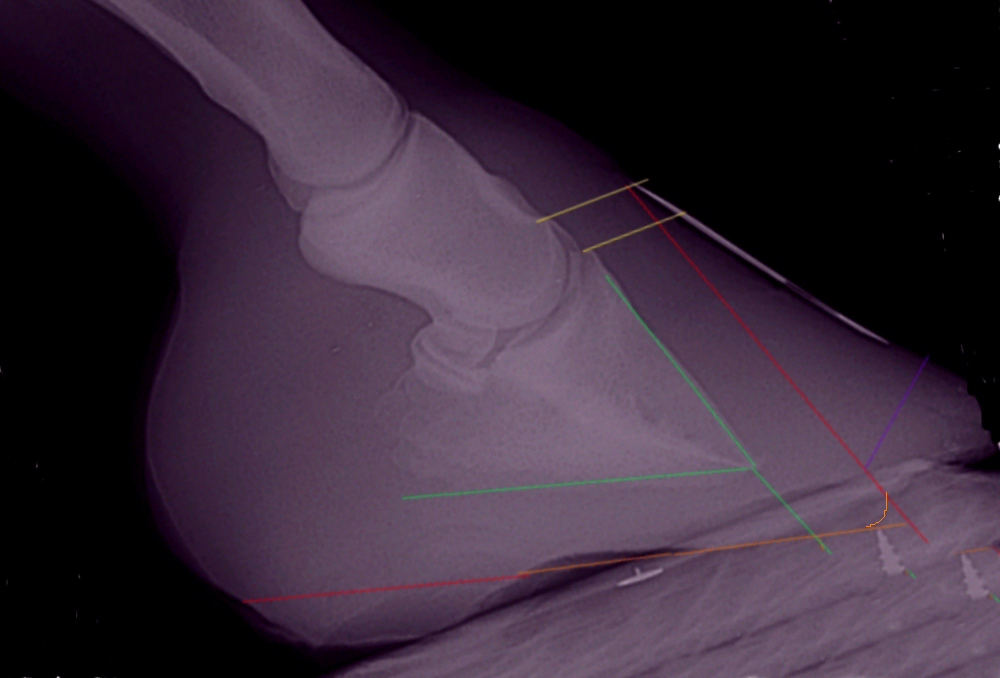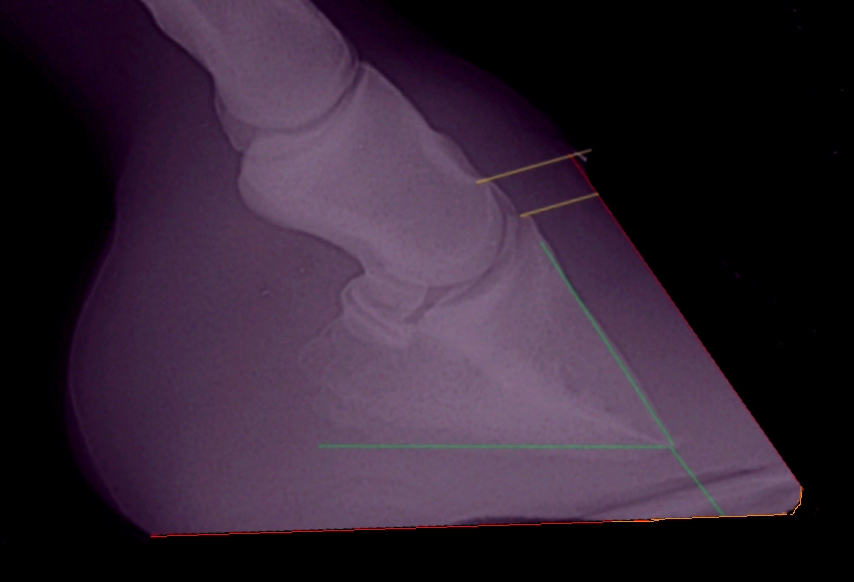Do people really still think that rotation or sinking following laminitis is a death sentence?! I know past research (which perhaps belongs in the past!) has claimed that an angle of rotation greater than 11.5 degrees, or 15 degrees, gives a poor prognosis. Well yes, I'd agree if the poor horse is just left like that! But I've seen horses with rotation of well over 20' make full recoveries and go back to their previous work, often with the rehab trimming being done by their owners, or a farrier who is following instructions by email! They simply need a correct trim - the trim that realigns the hoof to the bone - and to then have that trim kept perfect while the new hoof grows (plus the cause of the laminitis must have been identified and removed/treated and correct management must be in place).
And sadly I'm well aware that many horses are not getting their feet correctly realigned following laminitis - that's one of the main reason owners seek help on the internet. To quote Dr Kellon and the ECIR group again, "too many horses fail to recover from laminitis due to incorrect trimming." But once they get that correct trim, they can and usually do recover.
http://www.thelaminitissite.org/feet.html
or check out Sorrel's story:
http://www.thelaminitissite.org/sorrel.html




 RSS Feed
RSS Feed